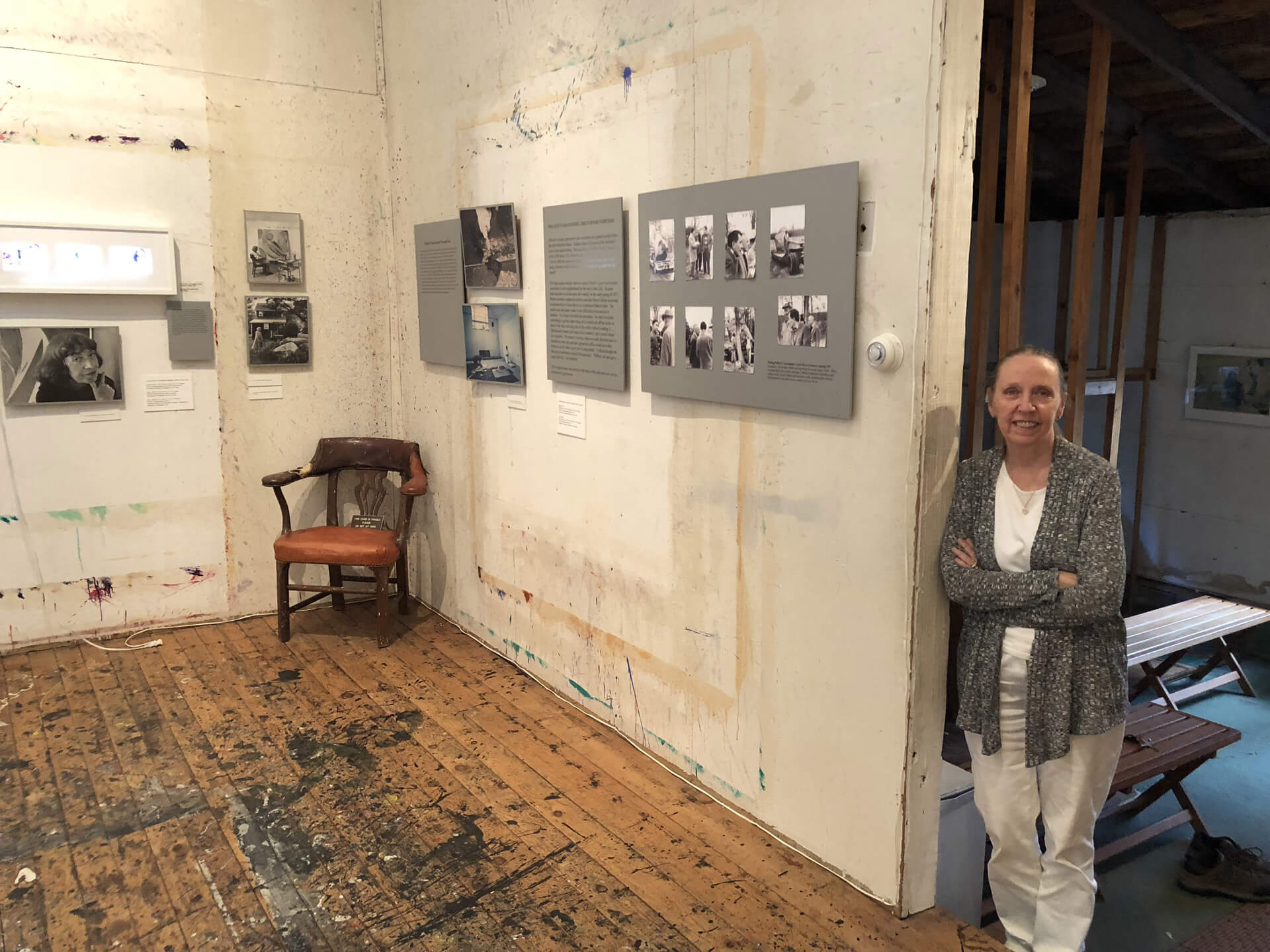Pollock-Krasner May Lose State Funding Following Town Edict

The Pollock-Krasner House and Study Center, which last year drew almost 10,000 visitors, is in danger of losing its state funding, after agreeing with the East Hampton Town attorney’s office to ban the public from visiting the site without reservations, beginning August 1.
The reason, according to a letter from town attorney Michael Sendlenski, is due to “significant concerns about the traffic congestion and safe parking conditions that result from the expanded use of the premises.” In the letter, dated July 16, Sendlenski called the current conditions on Springs-Fireplace Road, where most visitors park when attending the museum, “potentially dangerous.”
Starting August 1, instead of being open to the general public three days a week between the hours of 1 and 5 PM as it is now, the museum will revert back to the original East Hampton Town Planning Board guidelines put forth in a special permit, granted approval in 1991, that allows the site to be used as a semi-public facility, with visits by appointment only.
According to Sendlenski’s letter, starting August 1, the public’s access to the property will be limited to those three days, Thursday through Saturday, with three scheduled tours each day of no more than 12 people each. Reservations will be required.
The parking issue is a problem without an obvious solution. There is no place on the property to put parking spaces without radically altering the look and feel of the home and studio of Jackson Pollock and Lee Krasner, which is a National Historic landmark. Many visitors now park right off of Springs-Fireplace Road, and back out into oncoming traffic when leaving.
“He has a point,” said the museum’s director, Helen Harrison, of Sendlenski’s meeting with her and his follow-up letter.
The challenge of this change, said Harrison — who has been on the job at the site for 28 years — is that by following the town’s dictum, the museum is likely to lose its annual grant from the New York State Council on the Arts. This year, that grant was $8000, which is used for the general program. The Pollock-Krasner House is currently in the process of applying for next year’s state grant.
Harrison contacted Kristin Herron, the state council’s arts program director, and told her of the change of use for Pollock-Krasner about to be implemented, to find out what effect it would have on this year’s application. “I have to report any changes,” Harrison explained over the weekend. In response, Herron wrote in an email that while NYCA would still consider the application, by limiting public access, Pollock-Krasner would “not meet the public service requirement” needed for approval for funding.
Not only will the center lose the $8000 from the state for next year, it will lose untold thousands from the drop-in sales from the gift shop, as well as the $5 and $10 admission fees the general public currently pays.
Visitors to Pollock-Krasner have been steadily rising over the years. After the release of the 2000 film Pollock, starring Ed Harris, Harrison began noticing a change in type of people coming to visit. “People find us on the internet,” she said. “We have visitors from all around the world.”
The actual total attendance last year, which includes group visits and tours, was 9996. This year was on pace to break that record. The museum is open from May through October. “Last June, we had 1100,” she said of attendance. “This June, 1205.” The same is true of May. In 2017, there were 866 visitors in that month: there were 919 this year.
When the change takes effect, “We are going to have some irate customers,” Harrison predicted. She expects that many people who have already planned their vacations around a visit to the museum will show up, unaware that they will no longer be allowed in.
The economic effect of the change will be felt far beyond the roughly 1.5-acre property, which overlooks another two-plus acres of reserved land donated years ago by Krasner, after Pollock’s death. “People who come here, don’t just come here,” she said. They stay in local hotels, eat at local restaurants, and visit other cultural institutions, such as Guild Hall, Harrison explained.
“I have to live with it,” Harrison said about the change. After 28 years, Harrison has learned to see the bright side of any change, including this one. “On the positive side, there will be less wear and tear on the property,” she said. Also, those who make reservations for a tour in advance are more likely to be visiting to appreciate the meaning of Pollock-Krasner, not just visiting another tourist destination. “Last Saturday, (they were playing) Frisbee on the lawn,” she said. “Why were they here?”
Before anyone steps into the studio Pollock converted from the barn on the property, with Pollock’s original splashes of paint on the floor, shoes must be removed, and special slippers put on, to protect the surface. Even after 28 years, Harrison said, “I still really feel the energy when I go in there.”
t.e@indyeastend.com



